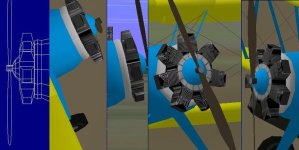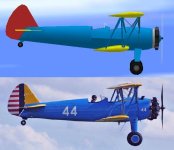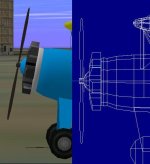aleatorylamp
Charter Member
Hello all!
This thread will be dedicated to building a Boeing Stearman-75 model with AF99 and some slight SCASMing for the cockpit view.
I will endeavor to supply an ARMY and a NAVY model, in colour schemes similar to those on the attached pictures.
This historical aircraft model boasts one of the highest numbers built, and thousands of pilots have been trained in them. Its sturdy construction has resulted in over half of the total produced units still to be flying nowadays, which is extremely impressive for an early 30´s design.
The flying characteristics of this notably large biplane are famous for being stable and quite forgiving, yet quite tricky on the ground, and the aircraft are renowned for its acrobatics, even those equipped with standard engines. Many were re-engined with twice the standard power or more, after a great number of surplus Stearmans became available to the general public after the war.
It was also widely used as a crop-duster, and some were even armed with machine guns and bombs, and sold to South American and African countries!
So... off we go!
Cheers,
Aleatorylamp
This thread will be dedicated to building a Boeing Stearman-75 model with AF99 and some slight SCASMing for the cockpit view.
I will endeavor to supply an ARMY and a NAVY model, in colour schemes similar to those on the attached pictures.
This historical aircraft model boasts one of the highest numbers built, and thousands of pilots have been trained in them. Its sturdy construction has resulted in over half of the total produced units still to be flying nowadays, which is extremely impressive for an early 30´s design.
The flying characteristics of this notably large biplane are famous for being stable and quite forgiving, yet quite tricky on the ground, and the aircraft are renowned for its acrobatics, even those equipped with standard engines. Many were re-engined with twice the standard power or more, after a great number of surplus Stearmans became available to the general public after the war.
It was also widely used as a crop-duster, and some were even armed with machine guns and bombs, and sold to South American and African countries!
So... off we go!
Cheers,
Aleatorylamp
















